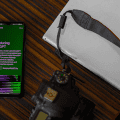In today’s fast-paced and technologically-driven retail environment, barcodes play a pivotal role in streamlining operations, enhancing inventory management, and improving overall efficiency.
However, the world of barcodes can be complex, with various types catering to different needs and industries. This guide aims to demystify barcode types and provide retailers and small business owners with the knowledge they need to make informed decisions.
Table of Contents
What are Barcodes?
Barcodes are a series of parallel lines or patterns that represent data about a product or item. These optical, machine-readable representations of data are used extensively in retail, logistics, and manufacturing to track items, manage inventory, and facilitate sales transactions quickly and accurately.
Why Are Barcodes Important?
Barcodes offer numerous benefits, including:
- Efficiency: Automating data entry reduces human error and speeds up the process.
- Inventory Management: Keeping accurate track of inventory levels helps prevent stockouts and overstock situations.
- Cost Savings: Reducing manual labor and errors saves time and money.
- Enhanced Customer Experience: Faster checkout processes improve customer satisfaction.
Understanding the different types of barcodes and their applications is crucial for maximizing these benefits.

Types of Barcodes
Barcodes come in various formats, each designed for specific applications. The two main categories are 1D (one-dimensional) barcodes and 2D (two-dimensional) barcodes.
1D Barcodes
1D barcodes, also known as linear barcodes, are the most common type and consist of vertical lines of varying widths and spaces. Here are some widely used 1D barcodes:
1. UPC (Universal Product Code)
- Use Case: Widely used in retail for tracking products.
- Structure: Consists of 12 numeric digits.
- Benefits: Standardized globally, making it ideal for products sold internationally.
2. EAN (European Article Number)
- Use Case: Similar to UPC but used more in Europe.
- Structure: Typically consists of 13 numeric digits.
- Benefits: Facilitates international trade and is compatible with UPC.
3. Code 39
- Use Case: Used in various industries, including automotive and healthcare.
- Structure: Can encode both numbers and letters, with variable length.
- Benefits: Flexibility in encoding alphanumeric data.
4. Code 128
- Use Case: Used in shipping and packaging for tracking.
- Structure: Can encode all 128 ASCII characters.
- Benefits: High data density, allowing for more information in a smaller space.
2D Barcodes
2D barcodes are more complex and can store significantly more data compared to 1D barcodes. They use patterns, shapes, and dots to represent data. Some common 2D barcodes include:
1. QR Code (Quick Response Code)
- Use Case: Used in marketing, ticketing, and payments.
- Structure: Square grid pattern that can encode URLs, text, and other data.
- Benefits: Can be scanned quickly by smartphones and store large amounts of data.
2. Data Matrix
- Use Case: Used in electronics and pharmaceuticals for tracking small items.
- Structure: Square or rectangular grid pattern.
- Benefits: Highly compact and readable even if partially damaged.
3. PDF417
- Use Case: Used in identification cards and transport tickets.
- Structure: Stacked linear pattern, resembling a “stacked” 1D barcode.
- Benefits: Can store huge amounts of data, including text and photos.
Choosing the Right Barcode Type
Selecting the appropriate barcode type depends on various factors, including the industry, the amount of data to be encoded, and the scanning technology available. Here are some considerations:
- Data Capacity: If you need to encode a large amount of data, a 2D barcode like a QR code or Data Matrix may be suitable.
- Space Constraints: For small items, consider using a Data Matrix due to its compact size.
- Industry Standards: Certain industries have standard barcode types. For example, retail typically uses UPC or EAN codes.
- Scanning Environment: Ensure that the barcode type chosen is compatible with the scanners you intend to use.
Implementing Barcodes in Your Business

To implement barcodes effectively, follow these steps:
- Assess Your Needs: Determine what you need barcodes for—inventory management, sales tracking, or something else.
- Choose the Right Type: Based on your assessment, select the barcode type that best fits your requirements.
- Invest in Equipment: Purchase barcode printers and scanners compatible with your chosen barcode type.
- Train Your Staff: Ensure that your employees understand how to use the barcode system effectively.
- Integrate with Software: Use barcode-compatible software for inventory management and point-of-sale (POS) systems.
Conclusion
Barcodes are indispensable tools for modern retail and business operations. By understanding the different types of barcodes and their applications, retailers and small business owners can enhance efficiency, reduce costs, and improve customer satisfaction. Whether you opt for a simple UPC or a more complex QR code, implementing the right barcode system can provide significant advantages for your business.
For those looking to dive deeper into the world of barcodes and optimize their business processes, feel free to reach out to industry experts or technology providers who specialize in barcode solutions. By leveraging the power of barcodes, you can take your business to new heights.



















